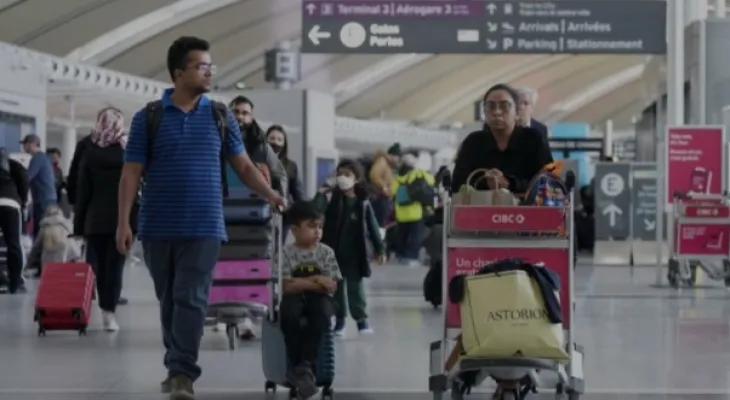Search here
Newspaper
Search here

Arab Canada News
News

Published: August 8, 2023
A new report has found that the Canadian tourism sector is slowing down again, after a rapid rebound when COVID-19 restrictions were lifted.
Over the past three years, the tourism industry has been working its way back to pre-pandemic numbers; however, a new report from TD Bank found that the pace of recovery started to slow this year.
The report, titled "A Slow Road to Recovery for Canadian Tourism Spending," stated that the decline is due to financial challenges in Canada such as rising interest rates, a slowing labor market, and a broader slowdown in tourism both domestically and internationally.
This slowdown means that full recovery will take time, as tourism activity and traveler spending are not expected to reach previous levels until 2025, according to the report published Thursday by TD economists Mark Ercolao and Rishi Sondhi.
International Tourism Activity:
While the number of domestic travelers was not available at the time of the report's publication, economists stated that available data shows that local tourism activity saw a more moderate decline during the onset of the pandemic and has since recovered faster than international tourism.
From the beginning of this year until May, the number of international travelers to Canada increased from 2.11 million to 2.25 million. This is similar to the 2011-2015 average; however, this figure is still 20 percent lower than pre-pandemic peaks.
While domestic tourism has seen a faster recovery post-pandemic, the lag in international tourism represents a significant weakness on the path to recovery.
According to the report, in the first five months of 2023, the number of Chinese visitors to Canada was 80 percent lower than the level during the same period in 2019. This notable difference reflects, in part, the tensions between the two countries as well as the travel restrictions imposed on group tours.
However, there is positive momentum with visitors from India, whose numbers have doubled compared to pre-pandemic travel.
Regional Variations:
The report also highlights varying recovery patterns in tourism across provinces, with the Atlantic region slightly outperforming the rest of the country.
Additionally, tourism in Western Canada is also outperforming other parts of the country, according to the report, with Alberta and British Columbia sitting at 11 percent and 13 percent below pre-pandemic levels, respectively. The challenges facing both provinces include labor shortages, which may hinder their ability to meet peak tourism season demands, according to the report.
On the other hand, Saskatchewan has lagged when it comes to international travel, with visits to the prairie province being 40 percent lower than the 2019 average. The report stated that this decline may be partly due to same-day tourists, whose numbers have dropped to less than 50 percent of pre-pandemic levels.
Another province lagging in international tourism is Ontario, which is down 24 percent from pre-pandemic levels. According to the report, Ontario's challenges are structural, including "employment issues."
Tourism Spending:
The report notes that inflation-adjusted spending has remained relatively stable for tourists, which is positive for those in the industry.
In the first quarter of 2023, domestic tourism spending reached nearly 90 percent of pre-pandemic levels compared to 80 percent for international visitors.
In the second quarter, expenses were similar. However, this means the figures were 13 percent lower than they were during the same period before the pandemic.
The report also predicts that spending will not reach pre-pandemic levels until 2025 due to numerous economic challenges.
For Canadians, the labor market is unstable, and it is expected to "lose a significant amount of strength" by the second half of this year.
Comments